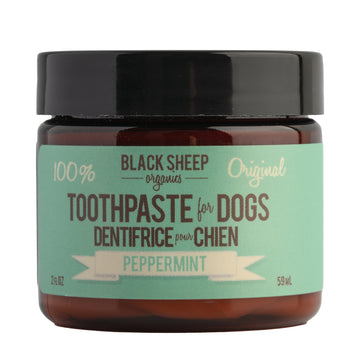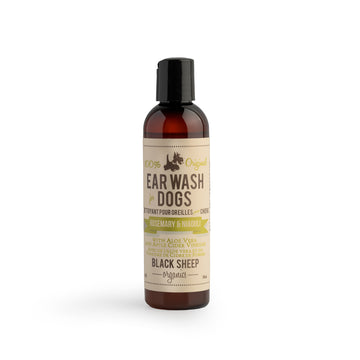Do It Right: Learn How to Clean Dog Wound on Paw
Dec 21, 2023
One unfortunate duty many dog owners face is cleaning a wound on their canine companion's paw. Paw wounds are relatively common for active dogs who enjoy exploring outdoor spaces. In this post, we will provide a step-by-step guide to safely and effectively cleaning a dog's wounded paw at home, as well as some tips for preventing infections and promoting healing.
Identifying Common Signs of Paw Injuries in Dogs
Dogs are adventurous and playful by nature, making them prone to occasional slips and trips. While most of these incidents are harmless, some might result in paw injuries. Here is a list of signs to watch out for:
- Limping or Difficulty in Walking: If your dog is suddenly limping or avoiding putting weight on a specific paw, it could indicate an injury.
- Visible Wounds or Bleeding: Check for any visible cuts, wounds, or bleeding on the paw.
- Excessive Licking or Chewing: Dogs may try to soothe their pain by licking or chewing the affected area excessively.
- Swelling or Redness: Swelling or redness around the paw pad can also suggest a possible injury.
- Changes in Behavior: Lastly, any unusual behavior like restlessness, whimpering, or loss of appetite may also be a sign of discomfort due to a paw injury.
Calming Your Dog Before Cleaning the Wound
Dealing with a paw wound can be stressful for your dog, so it's vital to approach the situation calmly and soothingly. Here are some tips:
- Speak Softly: Use a gentle, reassuring voice to soothe your dog. This can help them feel more relaxed and less anxious.
- Stay Calm: Dogs can pick up on our emotions, so it's important to stay calm and composed. This will help your dog remain calm, too.
- Pet Them Gently: Physical touch can be reassuring for dogs. Stroke their fur gently or give them a gentle hug to help them feel safe and secure.
Remember, patience and understanding are key when dealing with a paw injury. By preparing in advance and staying calm, you can provide the best care for your beloved pet.
Step-by-Step Guide: How to Clean a Dog's Cut Paw Pad
Next, we'll go through a step-by-step guide on how to clean a cut paw pad on your dog.
Using a Clean Towel to Apply Pressure to the Wound and Stop the Bleeding
The first step is to control any bleeding. Use a clean towel to apply gentle pressure to the wound. Hold it there for a few minutes until the bleeding subsides. Remember to remain calm and reassuring to help your dog stay relaxed during this process.
Cleaning the Wound: Gently Clean with Clean Water and Mild Soap
Once the bleeding has been controlled, it's time to clean the wound. Use warm water and a mild soap to gently cleanse the area. You can use a soft washcloth or sponge to softly wipe away any dirt or debris. Avoid scrubbing too hard as this can cause pain and further damage.
Removing Any Object Stuck in the Wound with Clean Tweezers
If you notice any foreign objects lodged in the wound, like pebbles or splinters, carefully remove them with a pair of clean tweezers. Be gentle and patient during this process. If the object cannot be easily removed, or if removal causes distress to your dog, it's best to seek immediate veterinary assistance.
Applying a Bandage to the Paw: How to Prevent the Bandage from Slipping
Finally, after cleaning the wound and applying a pet-safe antiseptic, it's time to bandage the paw. Here's how to do it:
- Apply a Non-Stick Pad: Place a non-stick pad over the wound. This will help keep the bandage from sticking to the wound and causing discomfort when it's removed.
- Wrap with Gauze: Wrap the paw with a gauze bandage, starting from the toes and working your way up. Be sure not to wrap too tightly as this can cut off circulation.
- Secure with Adhesive Tape: Secure the gauze with adhesive tape. Do not apply the tape directly to the fur, as this can be painful to remove.
- Check Regularly: Check the bandage regularly to ensure it's clean and dry. Replace it if it gets wet or dirty.
A slipping bandage can be prevented by ensuring it's properly secured and checking it regularly. However, if your dog seems uncomfortable or tries to remove the bandage, it may be too tight.
Caring for Your Dog's Cut Paw Pad Post-Cleaning
Post-cleaning care is crucial to ensure proper healing and prevent potential complications. Here's how you can provide compassionate, informed care for your dog's cut paw pad after it's been cleaned.
Regular Check-ups for the Cut Paw Pad
Regular check-ups are an integral part of the healing process. They help you monitor the wound's progress and notice any signs of infection early on. Here's what to look out for:
- Healing Progress: A healthy wound should gradually show signs of healing. Look for reduced redness, swelling, and gradual closure of the wound.
- Signs of Infection: If the wound appears more red, swollen, or has a foul smell, these could be signs of an infection. Should you notice any of these, consult your vet immediately.
- Dog's Comfort: Monitor your dog's behavior. If they seem particularly uncomfortable or in pain, this could indicate a problem with the wound.
Preventing Your Dog from Licking the Wound as It Heals
Dogs often lick their wounds as a natural response to soothe discomfort. However, this can delay the healing process and introduce bacteria, leading to potential infections. Here are some ways to discourage this behavior:
- Use a Protective Collar: Also known as an "Elizabethan collar" or "cone," this device prevents your dog from reaching the wound with their mouth.
- Distraction Techniques: Keep your dog engaged with toys or play sessions to distract them from licking the wound.
- Positive Reinforcement: Reward your dog when they avoid licking the wound, reinforcing the desired behavior.
In wrapping up, remember that properly cleaning a dog's wound on the paw is crucial for their health and comfort. By following these steps with care, patience, and regular monitoring, you can ensure your furry friend's speedy recovery. Your tender loving care makes all the difference in these challenging times.






